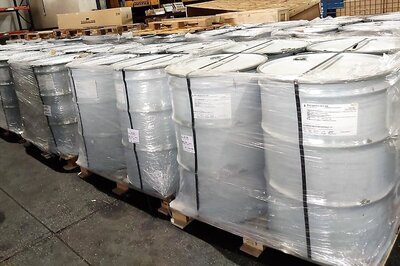
views
Seventy-five years is a long time for a nation. It has been especially long for the crores of Indians who were kept deprived of basic necessities – without which the sustenance of life can be excruciating, if not impossible. Whether it be the absence of toilets in households, the lack of electricity connections and cooking gas, or the fact that crores of Indians did not have access to safe tap water for decades on end – lack of government intervention on all these fronts remains a blot on our nation’s conscience. For years, successive governments failed to provide the most basic necessities to Indians who needed them the most. That is now fast changing. The buzz right now is around the Har Ghar Jal initiative – which is empowering crores of Indian households with tap water connections.
On the occasion of Prime Minister Narendra Modi’s birthday, Uttar Pradesh set a new record – by providing new tap water connections to 1 lakh families. UP is already at the top when it comes to providing tap water connections to households that have never had one before. In the past three years, tap water connections have been provided to more than 1.6 crore households in rural Uttar Pradesh alone. However, Har Ghar Jal as a government intervention programme to provide tap water connections is registering fascinating results across the nation.
HAR GHAR JAL: CHANGING LIVES IN RURAL INDIA
With a budgetary outlay of 3.6 lakh crore rupees, the Har Ghar Jal mission is transformative in its impact and ambitious in its goals. This mission aims to provide tap water connections to every rural household in India soon. Here are some fascinating numbers related to the programme.
• Of India’s 19.3 crore rural households, only 3.2 crore had tap water connections in August 2019. This means India had a tap coverage of just about 17% prior to the launch of the Har Ghar Jal initiative.
• As of September 2023, over 13 crore households, or about 67% of the targeted households, have been provided with water connections.
• News18 had earlier reported how under the Har Ghar Jal initiative, India is installing one new water tap connection for rural households every second!
• India surpassed last year’s record of tap installation within the first eight months of this year alone. A total of 2.16 new tap water connections were installed until August this year, compared to the 2.08 crore installed in the entirety of 2022.
• The Har Ghar Jal initiative is also proving to be a boon for crores of Indians, as it is saving them from a host of health risks. According to the government, in 2019, there were 14,020 habitations across six states that were affected or contaminated by arsenic. As of July 2023, that number saw a drastic reduction to just about 460 habitations across three states.
• According to a World Health Organization report, ensuring safe drinking water for all households in the country could avert nearly 400,000 diarrhoeal disease deaths. There is more. With universal coverage of safely managed drinking water in India, almost 14 million Disability Adjusted Life Years from diarrhoeal disease are estimated to be averted, resulting in approximate cost savings of up to $101 billion.
An often-overlooked aspect of the Har Ghar Jal initiative is how it is transforming the lives of women in rural India. Traditionally, the responsibility of fetching water in most rural Indian households fell on the shoulders of women, who had to often traverse significant distances for nominal volumes of water. This task would occupy a major part of their day. Today, with water tap connections fast spreading across the length and breadth of India, women no longer need to undertake arduous journeys, especially in the scorching heat of summer months.
Remember, this is happening in a country where successive governments failed to provide something as basic as a water connection to crores of households. Such was the institutional apathy towards Indians’ most rudimentary requirements, that most people had lost hope, and almost normalised living in substandard conditions. No concrete homes, no toilets, no electricity, no cooking gas, and no water – this is what defined the lives of India’s underprivileged rural class until recently. Ask them how they feel about getting all of this simultaneously – in less than a decade since 2014 – and you will understand why Brand Modi remains unscathed among the most significant voter base of India.
TIME FOR GOVT TO DOUBLE DOWN ON HAR GHAR JAL MISSION
The Har Ghar Jal mission is not just about fixing taps and providing piped connections to households. The core of this initiative is, in fact, the determination to provide safe and hygienic water to all Indian households. So, to accomplish that, multi-crore water treatment plants are sprouting in almost all districts. While many believe that the government is simply laying pipes and providing tap connections in rural India, the reality is that the Har Ghar Jal initiative, along with its parent Jal Jeevan Mission is setting up intricate water storage and supply infrastructure in nearly every district of the country.
A survey by community social media platform LocalCircles this year showed that the number of Indians who believe that the quality of tap water they receive from municipal bodies is improving has gone up in the past year. 44% of the respondents said that their tap water is good or higher, up from 35% last year.
But the entire chain of water supply is still in need of significant upgradation. For example, the same survey found that even though the quality of water produced at filtration plants may be top-class, it deteriorates as it travels through the trunk mains to service reservoirs. 14% of respondents still rated piped water supplied to their homes as “poor” or “very poor”. Only 3% of respondents said that they do not need to purify tap water before drinking it. A majority of them – nearly 72% – purify tap water with some sort of purifier. Now while purifying water at a household level is a good practice, there still remains a lot to be desired from the supply end in terms of cleanliness, safety, and hygiene.
So, one of the biggest challenges for the government is to ensure that the water being supplied is actually safe for drinking. For that, it must ensure the upgradation and constant upkeep of water storage and supply facilities at the district level.
Despite these challenges, the lengths to which the Har Ghar Jal initiative has gone in taking piped water connections to households is incredible. Water is a basic necessity required to uplift the most underprivileged and marginalised communities in rural India. As India gears up to celebrate the 8th edition of National Water Week in November, it would be a good opportunity to highlight the achievements of the Har Ghar Jal initiative, while also deliberating on the challenges that exist and ways to overcome them.
















Comments
0 comment